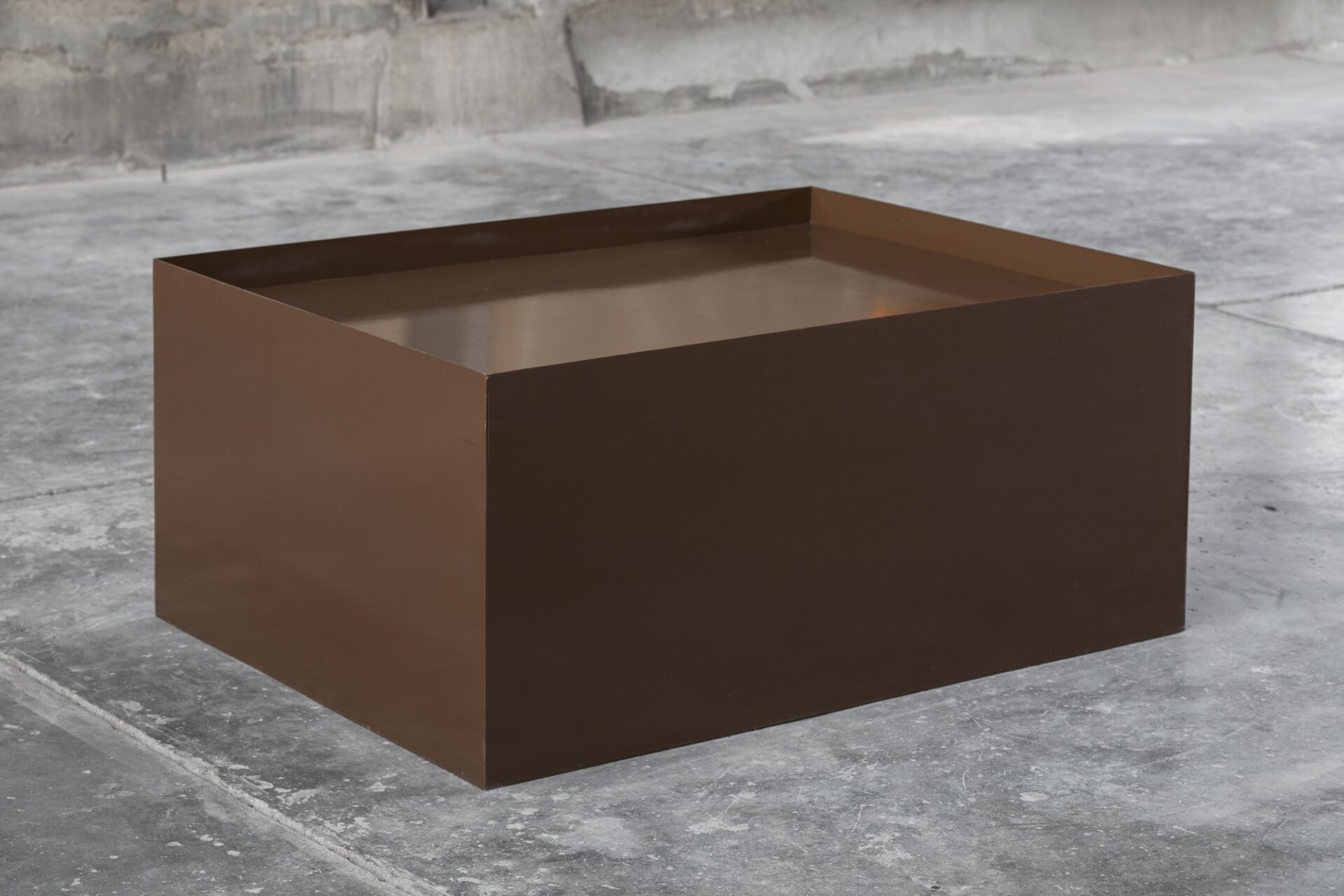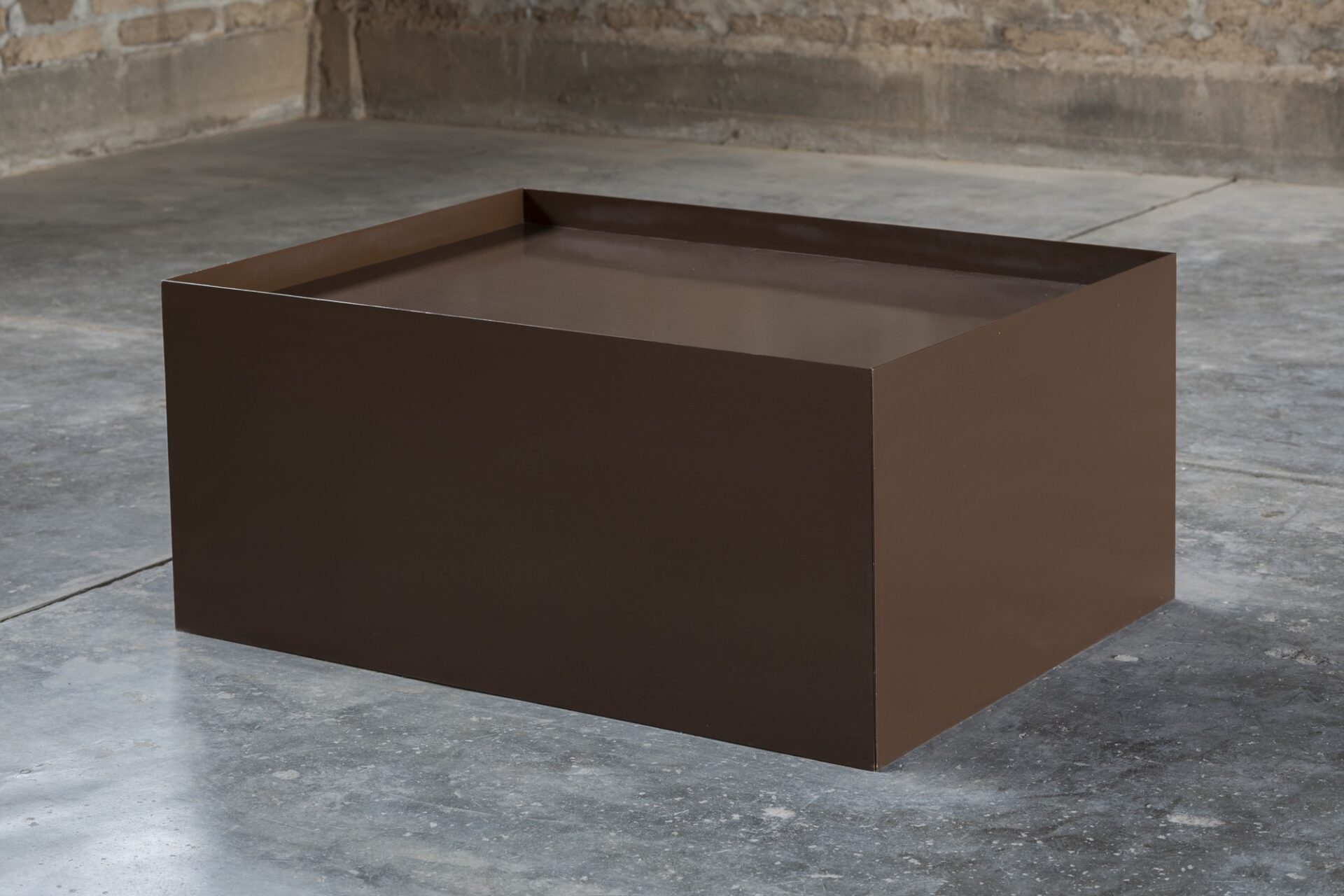This is one of a number of floor pieces with recessed tops made in the 1960s and 1970s; it was included in Donald Judd’s first major museum exhibition, at the Whitney Museum of American Art, New York (Don Judd, February 27–March 24, 1968, extended through April 14).
Judd said of the recessed fronts, tops, and sides of forms in his work:
It occurred to me if you took one of the sides and pushed it in, it would open the top surface up. I was always interested in edges and flanges. I was also interested in a certain quality of thinness and edgeness in the paintings. It defines what the boxes are made of by showing the thickness of the sheet metal, and thus becomes less arbitrary, more rigorous, with a more precise knowledge of the thickness of the material. So it shows, or makes, or emphasizes the edge more clearly.1
This was the first work Judd made entirely of hot-rolled steel. He used this form in the same or similar dimensions in at least four other works: with brown enamel on aluminum in 1968, in brass in 1968 and 1969, and in stainless steel in 1972.

